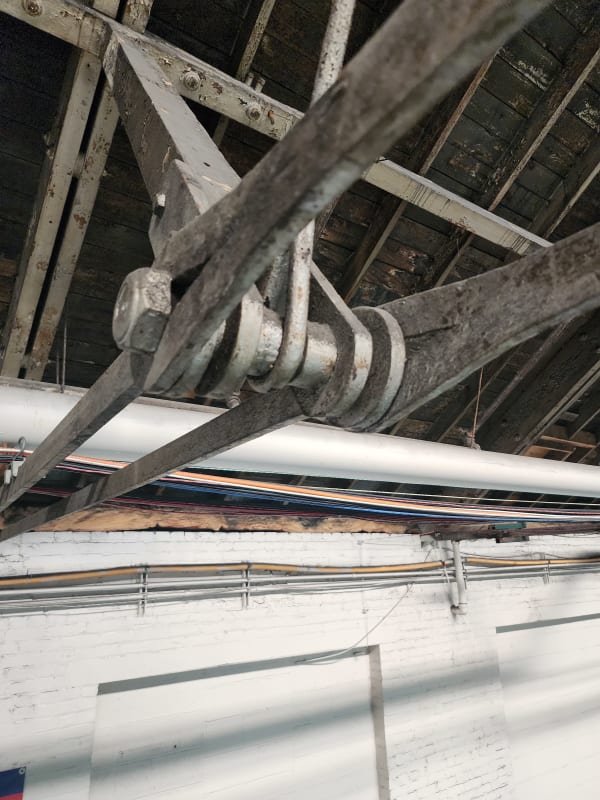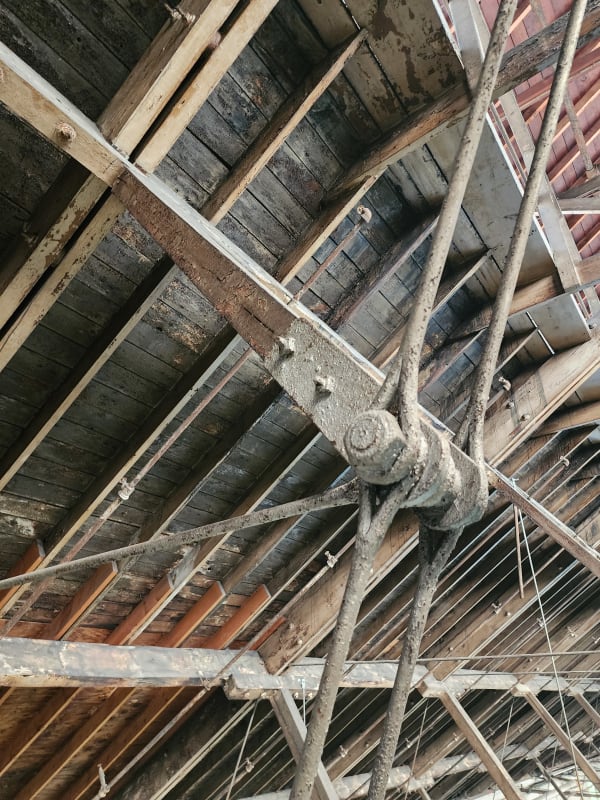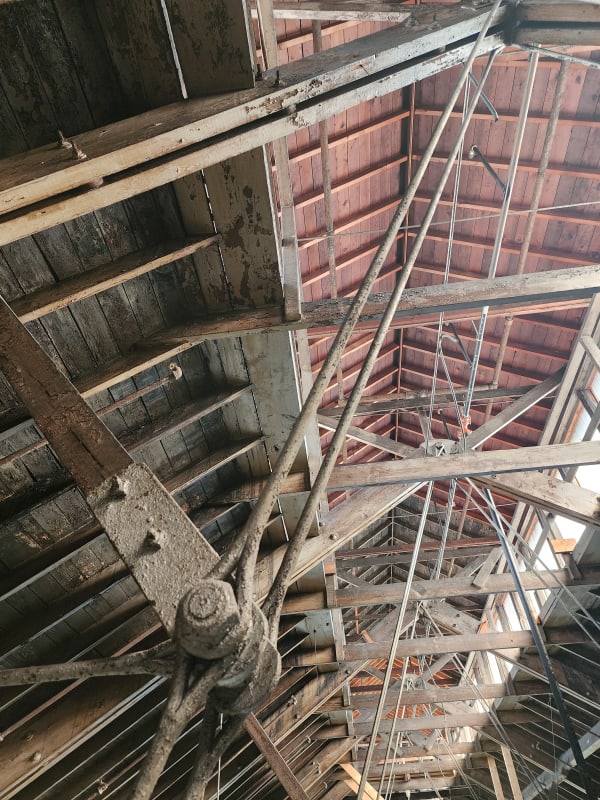Navigation
Install the app
How to install the app on iOS
Follow along with the video below to see how to install our site as a web app on your home screen.
Note: This feature may not be available in some browsers.
More options
Style variation
-
Congratulations cowski on being selected by the Eng-Tips community for having the most helpful posts in the forums last week. Way to Go!
You are using an out of date browser. It may not display this or other websites correctly.
You should upgrade or use an alternative browser.
You should upgrade or use an alternative browser.
19th century steel properties 2
- Thread starter jay156
- Start date
- Status
- Not open for further replies.
- Thread starter
- #3
I have no idea about this website (seems safe enough), but they seem to have pulled some information from a book that may be of interest to you. Hopefully it gets you started...
Braced Rafters with Wrought Iron Ties
Braced Rafters with Wrought Iron Ties
-
1
- #5
This looks to be the book it came from:
Building Construction and Superintendence, Part III: Trussed Roofs and Roof Trusses; F. E. Kidder, C.E., Ph.D, Architect
Building Construction and Superintendence, Part III: Trussed Roofs and Roof Trusses; F. E. Kidder, C.E., Ph.D, Architect
Just to throw this out there but if this is a situation where exact material properties need to be known rather than general ballparks (e.g., analysis shows could be real close) then you need to do a few coupon tests of the material in-situ.
This is also really cool. Thanks for posting the pictures!
This is also really cool. Thanks for posting the pictures!
I'd determine which areas are lowly stressed and look at obtaining representative samples from these areas. I cut the material with a saw and not with a torch. It would help to locate a good testing company and have them review the locations and the samples.
-----*****-----
So strange to see the singularity approaching while the entire planet is rapidly turning into a hellscape. -John Coates
-Dik
-----*****-----
So strange to see the singularity approaching while the entire planet is rapidly turning into a hellscape. -John Coates
-Dik
You see...it's easier for me to say from afar what to do. Didnt say I would know how to do it!
Ideally we get a test from every type of member but based on the pictures it looks like the webs are out unless we have some spares kicking around. So as a first go (more may be needed later) I would suggest cutting a section of the plates and then having a plan in place to restore capacity at the cut. Would take a bit of work because assuming non-weldable steel you'd have to do some through-bolting or other mechanical fastener through new/old plates. Also may want to put some shoring up until retrofit plate is added.
An alternative thought is that if those posts are our compression members (seems likely) and there is a nice plate or transfer mechanism at the base those bolts might not be very stressed at all. In which case we would probably still do *something* as a retrofit to take the sample but probably don't need to shore it.
Option 1 take a long thin cut leaving both bolts in-tact. Add new plate / screws prior to doing so (bolts look like they have decent thread).
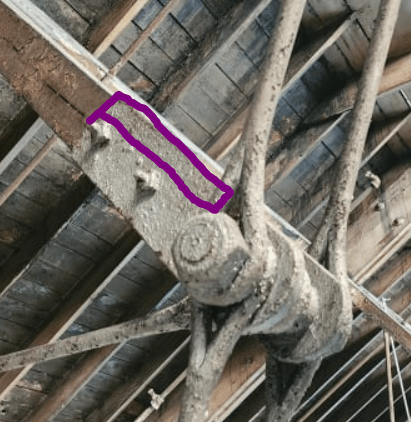
Option 2 add another through-bolt below first one and cut above.
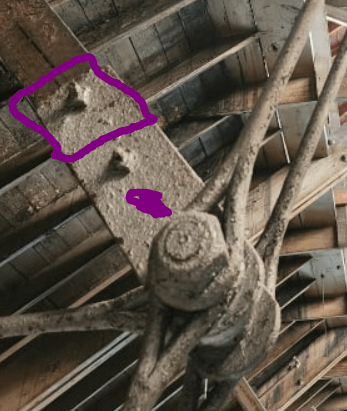
EDIT - Also we should probably get some bolts back to the lab as well. So replace a few with A325 or what have you.
Ideally we get a test from every type of member but based on the pictures it looks like the webs are out unless we have some spares kicking around. So as a first go (more may be needed later) I would suggest cutting a section of the plates and then having a plan in place to restore capacity at the cut. Would take a bit of work because assuming non-weldable steel you'd have to do some through-bolting or other mechanical fastener through new/old plates. Also may want to put some shoring up until retrofit plate is added.
An alternative thought is that if those posts are our compression members (seems likely) and there is a nice plate or transfer mechanism at the base those bolts might not be very stressed at all. In which case we would probably still do *something* as a retrofit to take the sample but probably don't need to shore it.
Option 1 take a long thin cut leaving both bolts in-tact. Add new plate / screws prior to doing so (bolts look like they have decent thread).

Option 2 add another through-bolt below first one and cut above.

EDIT - Also we should probably get some bolts back to the lab as well. So replace a few with A325 or what have you.
-
1
- #10
Leaving out the rods wouldn't work - they are a completely different material. More than likely (based on my initial assumptions and that book I linked to - check it out, Enable...I'm thinking of buying the reprints of all 3 volumes), the rods are wrought iron and those shoes on the wood compression members are cast iron.
I'd prefer to leave them in place and just not change the loading on them, but if that's not an option (snow, change of occupancy, etc.), then I'd say shore up an area and take apart one of the trusses and test the components. You'll have to rebuild at least one truss - if the results come back and it it's no adequate then you'd have to replace them all anyway. Not much you can do to 'reinforce' a truss like that.
I'd prefer to leave them in place and just not change the loading on them, but if that's not an option (snow, change of occupancy, etc.), then I'd say shore up an area and take apart one of the trusses and test the components. You'll have to rebuild at least one truss - if the results come back and it it's no adequate then you'd have to replace them all anyway. Not much you can do to 'reinforce' a truss like that.
- Thread starter
- #11
Thanks for the book suggestion! Figure 41 is almost the exact view of the actual truss, and the eye detail of the flat bars looks just like what's there. Based on that then, I'd say you're right that they're wrought iron.
I don't know about the shoes at the ends of the web members, but the shoe at the very peak looks almost certainly like cast iron.
It is really cool. It's crazy to be there measuring it up and thinking how this building has been around for 150 years. It was already old when my grandfather was born.
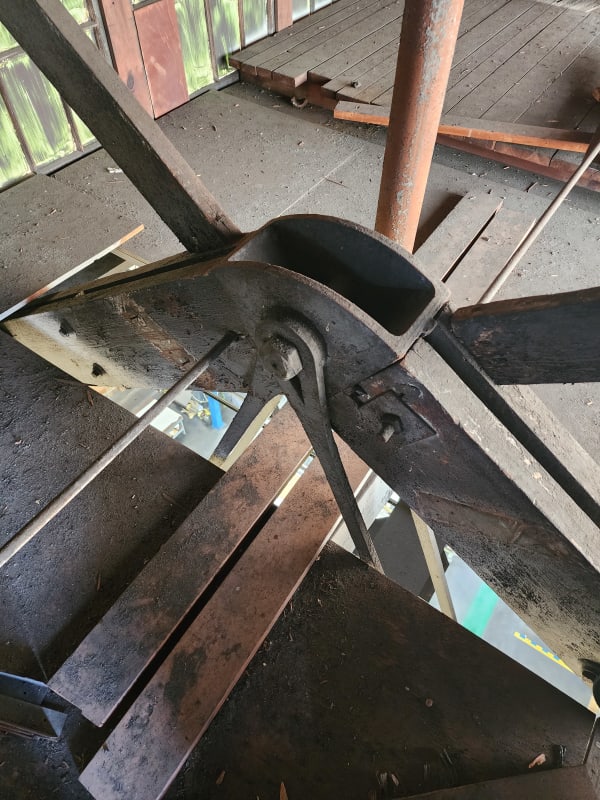
I don't know about the shoes at the ends of the web members, but the shoe at the very peak looks almost certainly like cast iron.
It is really cool. It's crazy to be there measuring it up and thinking how this building has been around for 150 years. It was already old when my grandfather was born.

I've seen sway rods on older towers with the forged-end loops, and I'm pretty sure those were steel (early 1900s). So that may relate more to method of manufacture (blacksmithing/ hand forging) than to material.
Is it possible (or practical) to polish/etch a surface in place and ascertain if it's steel, wrought iron, or cast iron?
I can see a possibility of going to a lot of trouble to extract samples, repair the damage, then come up with widely varying test results that don't tell you that much.
Is it possible (or practical) to polish/etch a surface in place and ascertain if it's steel, wrought iron, or cast iron?
I can see a possibility of going to a lot of trouble to extract samples, repair the damage, then come up with widely varying test results that don't tell you that much.
EdStainless
Materials
A portion of our plant in Indianapolis was a similar age and construction.
The problem that we had was some timbers had been damaged.
Finding lumber the correct size and strength required us going to a mill having them custom cut and dried.
These are from the days when metal was weak, and timber was strong.
I doubt that a polished section on the rods would tell you what they are.
Most likely they will have a lot of stringers in the structure.
If it is wrought iron, they would be phosphorus and if it is old steel they would be sulfides.
But they would look similar.
= = = = = = = = = = = = = = = = = = = =
P.E. Metallurgy, consulting work welcomed
The problem that we had was some timbers had been damaged.
Finding lumber the correct size and strength required us going to a mill having them custom cut and dried.
These are from the days when metal was weak, and timber was strong.
I doubt that a polished section on the rods would tell you what they are.
Most likely they will have a lot of stringers in the structure.
If it is wrought iron, they would be phosphorus and if it is old steel they would be sulfides.
But they would look similar.
= = = = = = = = = = = = = = = = = = = =
P.E. Metallurgy, consulting work welcomed
jerseyshore
Structural
I agree with Pham 100%. I think you have to do a really robust analysis of a single truss and its materials or just bypass it all together (which I would prefer). Since reinforcing these aren't really an option a lengthy analysis probably isn't worth doing.
Why do you need to run numbers on this? What's the change in loading from?
Why do you need to run numbers on this? What's the change in loading from?
- Thread starter
- #15
Oh, well that's sad. This is one of those cases where to perform a proper analysis you'd likely be charging more than it would take to design and build some sort of sub-structure. Don't forget you'd have to evaluate the wood too, which as Ed pointed out has its own peculiarities. You should also tell them it would be a crime to cover these glorious things up!
phamENG: that book looks great
phamENG: that book looks great
- Thread starter
- #17
Yeah, that's how I feel too. They have this cleanroom area with big windows near the entrance and they like to walk VIP's past there to show off the employees working on their modern state of the art equipment, and I guess they prefer the look of ceiling tiles to historic trusses. Some people have no taste.
- Status
- Not open for further replies.
Similar threads
- Replies
- 2
- Views
- 1K
- Locked
- Question
- Replies
- 2
- Views
- 360
- Replies
- 5
- Views
- 6K
- Replies
- 0
- Views
- 7K
- Replies
- 3
- Views
- 8K

